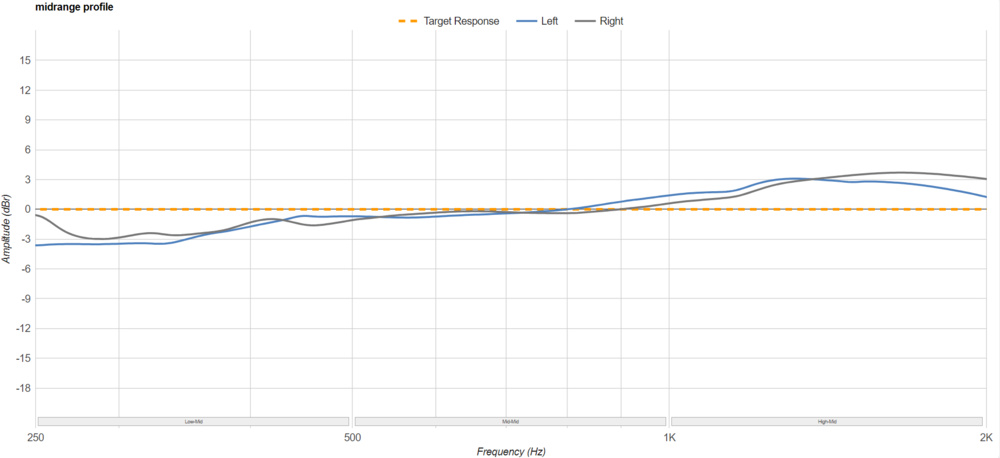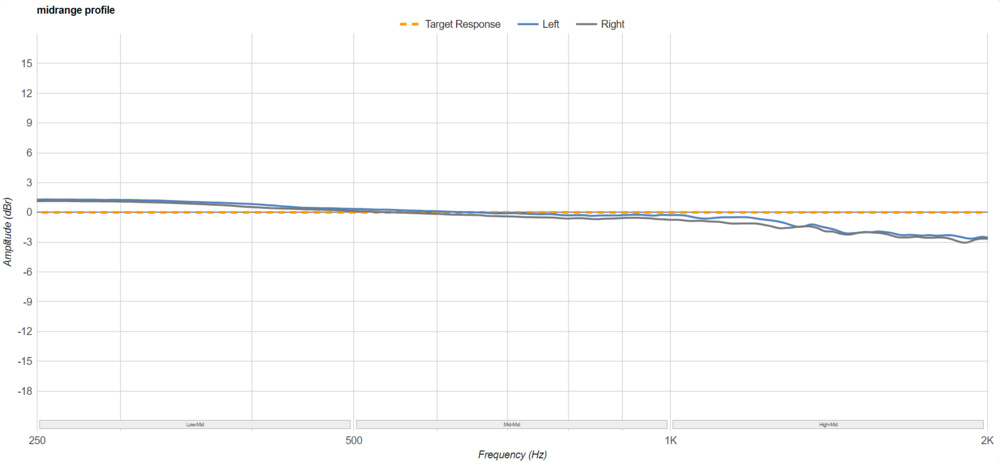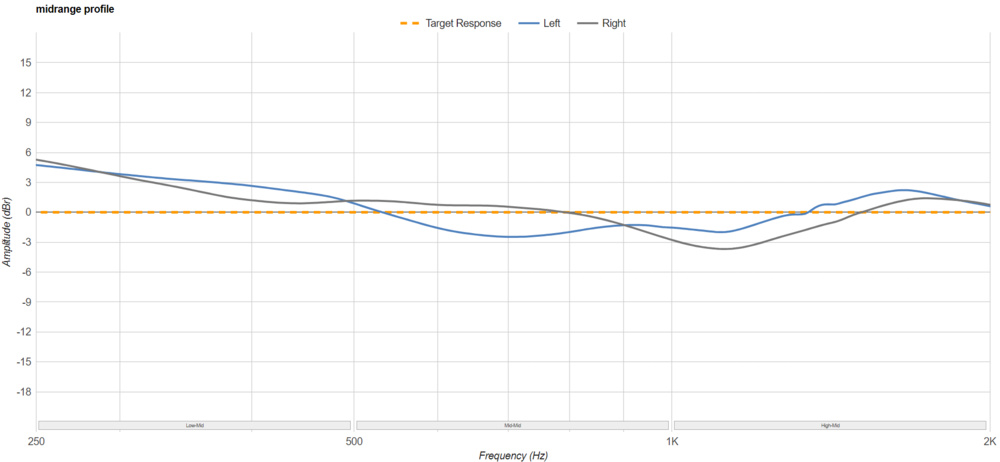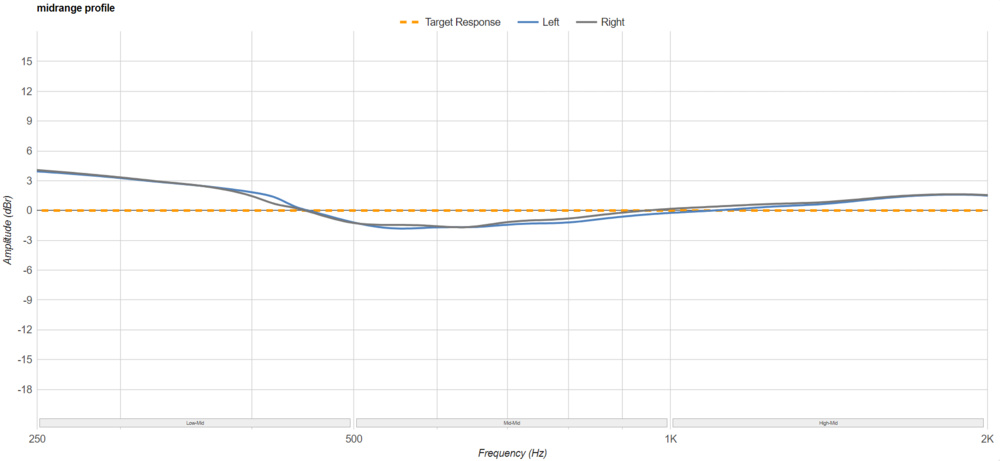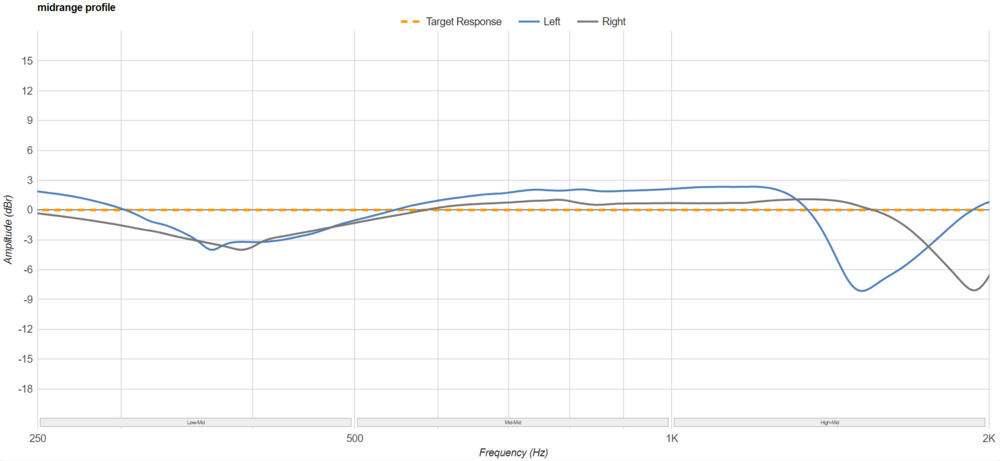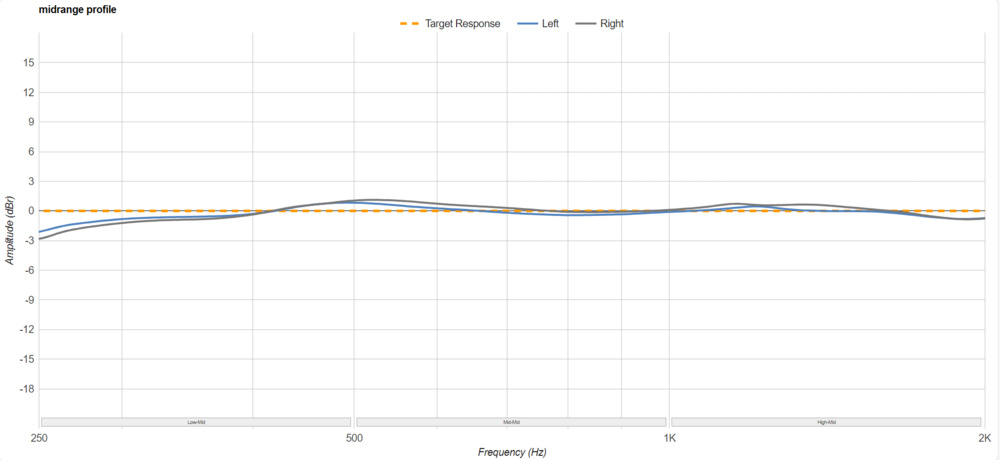'Mids' describes the mid-range spectrum of frequency response, which ranges from 250Hz up to 2.5kHz. Most musical instruments and vocals have their fundamental tones and lower harmonics here. Therefore, the bulk of audio you hear in music lies within this spectrum: think warm notes, spoken words, string instruments, and vocals.
For mid-range performance, we measure the low-mid, mid, and high-mid frequency response, then use these values to evaluate the deviation from our target curve. We also use sound quality terms to help showcase the over- and/or underemphasized frequencies, so if you're just dipping your toes into these technical terms, you'll want to check out our sound quality glossary.
Test results
When It Matters
The mid-range is important for most audio genres. It covers the bulk of frequencies heard, including a wide array of instruments and vocals. This makes this range important not only in music but in movies and audiobooks, too.
More mid-range hype than our target curve can cause vocals and instruments in some tracks to overpower the bass and highs. This emphasis works for spoken word like calls and audiobooks but may cause music to sound nasal and a little unexciting. Inversely, less mid-range response than our target curve will cause audio to sound muddy, with a decrease in the clarity of instruments and vocals, which are present in almost all genres. However, personal taste and listening habits are important in your selection, and different mid-range profiles may suit listeners differently.
Our Tests
RMS Deviation From Target
RMS Deviation From Target for the mid-range shows the amount of deviation of the measured mid-range response from our target response. Of the three frequency regions, the mid-range is the least affected by fit/seal and head/ear shape variances. Therefore, most headphones tend to perform quite consistently in the mid-range.
Low-Mid
We calculate the low-mid value by averaging the amplitudes of each frequency within the low-mid region. We then report the final value relative to our target curve.
The low-mid region is where most instruments have their fundamental frequencies or lower harmonics. Headphones with a low-mid response that's less than our target curve may make most instruments, especially vocals and leads, sound thin. Conversely, headphones with more low-mid than our target can make the mix sound muddy and cluttered.
The Beats Studio Pro Wireless have an underemphasized low-mid, which makes vocals and instruments sound thin.
The Sennheiser HD 800 S' response follows our target curve well, so vocals and instruments in this range are clear.
The Sony WH-1000XM5 Wireless' high-mid is overemphasized compared to our target curve.
Mid-Mid
The mid value, similar to low-mid, is calculated by averaging the amplitudes of each frequency within the mid-region. We then report the final value relative to our target curve.
Since the mid-region is where most instruments have their upper harmonics, headphones with less low-mid than our target may sound like most instruments, especially vocals and leads, are being pushed to the back of the mix. Conversely, headphones with more mid-mid than our target may make the mix sound forward and boxy.
The Sony WF-1000XM5 Truly Wireless has a dip in its mid-mid range. This dip can push back vocals and instruments to the back of the mix.
The Sennheiser HD 800 S' response follows our target well in the mid-mid range. Vocals and instruments sound clear and present.
The Sony PULSE Elite Wireless' mid-mid range is slightly overemphasized, which nudges vocals and instruments forward in the mix.
High-Mid
The high-mid value, like low-mid and mid-mid, is calculated by averaging the amplitudes of each frequency within the high-mid region. We then report the final value relative to our target curve.
Since the high-mid region is where most instruments, especially vocals and leads, get their intensity and clarity, headphones with less high-mid than our target could make vocals and leads sound weak and distant. Conversely, you may perceive headphones with more high-mid as sounding honky and harsh. That said, extra high-mid can help ensure that vocals and instruments are crisp and clear if you take a lot of calls or if there's a lot of extra bass in the mix.
The Sennheiser HD 800 S' high-mid is slightly underemphasized compared to our target. Vocals and instruments are weakened by this dip.
The Beyerdynamic DT 770 PRO have a very flat high-mid response. Their sound follows our target well, resulting in clear and present vocals and instruments.
The Beats Studio Pro Wireless have an overemphasized high-mid range. This bump makes vocals and instruments sound a bit harsh.
The mid-range is where you'll find most instrumental fundamentals, speech, and vocals. Since it sits between the bass and treble, this range is susceptible to range bleeding; over or underemphasis in either range can continue into the mid-range, affecting the clarity and presence of sounds that reproduce here. Still, if the mid-range isn't to your liking, and you can access an EQ, you can always adjust this range to better suit your preferences.
